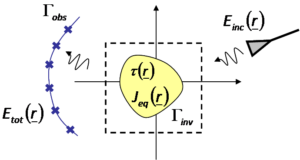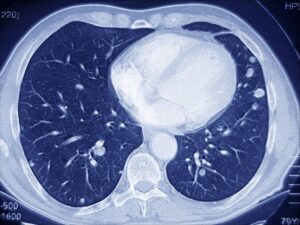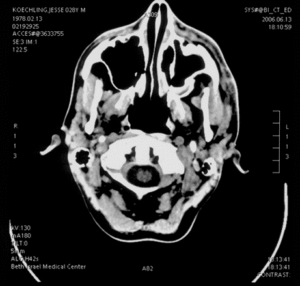-
Name (Acronym)Numerical Electromagnetics for Medical Diagnostics (NEMD)
-
Date15 June - 25 June 2026
(2 weeks, 24 hours/week) -
Teacher
-
Contact E-mail2025-2026.LM.NEMD.UniTN.TRENTO.IT@eledia.org
-
ECTS6
-
Institution
-
Study Program
-
Degree
-
LanguageEnglish
-
Tracks
ABSTRACT
The course provides basic and advanced knowledge on the solution of inverse problems with main emphasis on numerical techniques for electromagnetic diagnostics and imaging in medical applications. The classes consist of theoretical/application lessons aimed at the presentation of the state of the art of the subject and the in-depth study of innovative numerical methods for electromagnetic diagnostics as well as their use for dealing with different medical diagnostics problems through the use of ELEDIA software tools.
COURSE FORMAT
The Course is taught in 🇬🇧️ ENGLISH and offered
- On-site
- On-line (synchronous and asynchronous)
with video recordings, hand-outs, etc. of the lectures available off-line (*).
COURSE CONTENT
Part 1: INTRODUCTION TO EM DIAGNOSTICS PROBLEM
- The electromagnetic detection and diagnostics problem
- Formulation and representative equations of a diagnostic problem
- Techniques for the solution of diagnostic problems
- Green's function technique for the solution of the Helmoltz equation in free space
- The equivalence principle of the electromagnetic fields (volume formulation)

Part 2: PROPERTIES AND CHARACTERISTICS OF AN INVERSE PROBLEM
- Direct problem and inverse problem
- Characteristics of an inverse problem: ill-posedness and non-linearity
Part 3: NUMERICAL EM DIAGNOSTICS AND IMAGING TECHNIQUES
- The inverse source and inverse scattering problems
- Reconstruction of the equivalent source and of the characteristics of the dielectric object
- The method of moments
- The non-radiating currents
- Linear inversion approaches: high-frequency techniques; the “3-step” algorithm
- Extension to the multi-illumination, multi-view case
- Non-linear inversion approaches
Part 4: MEDICAL APPLICATIONS
- Introduction to tomographic reconstruction
- X-ray tomography (TAC - Computerized Tomography)
- Back-Projection algorithm
- Microwave Imaging


TEACHING ACTIVITIES
- Theoretical Lessons
- e-Xam Self Assessment (each teaching class or periodically)
- MATLAB Hands-On
- e-Xam Final Assessment
FURTHER READINGS
- M. Bertero and P. Boccacci, “Introduction to Inverse Problems in Imaging”, IoP Press, 1998.
- M. Pastorino, “Microwave Imaging”, John Wiley & Sons, 2010.
- M. Pastorino and A. Randazzo, “Microwave Imaging – Methods and Applications”, Artech House, 2018.
- G. Franceschetti, “Electromagnetics Theory, Techniques, and Engineering Paradigms”, Kluwer Academic/Plenum Publishers, 1997.
- W. C. Chew, “Waves and Fields in Inhomogeneous Media”, Oxford University Press, 1996.
For further references please contact the Teacher(s).
(*) Each registered participant acknowledges that the material distributed in the frame of the course, available for the duration of one academic year, is protected by copyright and delivered for educational purposes and personal use only. The participant agrees and undertakes not to forward, publish, disclose, distribute, disseminate - in any form or manner - such a material without written consent of the author(s) of the material. Unless otherwise explicitly allowed by the speaker in written form, no recordings of the online lectures can be made.
Registration Information
| UniTN Students: | Free |
| EXTERNAL Students: |
216 Eu: First course 180 Eu: Every course from the second one |
The fees include the course teaching, video recordings, hand-outs, etc. (*).
Registration Procedure for UniTN Students
Please contact the Student Support Office of your Department/Centre/School to include the course in your study plan.
Registration Procedure for EXTERNAL Students
Step 1: Register a "guest" type account (@guest.unitn.it)
- Should you still not have a UniTN account, you have to register and log in with your SPID identity or CIE (electronic ID card). If you cannot use SPID or CIE, please create your own UniTN account.
Step 2: Enroll to a Single UniTN Course
-
Complete the online application through the dedicated webpage.
In the application form (Section "Teaching Activities") put the following information:- Name of single class/teaching activity: Numerical Electromagnetics for Medical Diagnostics
- Code of single class/teaching activity: 146279
- Degree course to which the teaching activity is associated: [0518H] Fisica
- Once received the outcome of the application (1-3 days), login into ESSE3 with your "guest" account user-name and password. Then, pay the bulletin you find in Administrative Office – Payments.
NOTES:
- A vademecum with a step-by-step guide to enroll to a single course at the University of Trento is available here
- For any question on the registration process, please write to didattica@eledia.org
(*) Each registered participant acknowledges that the material distributed in the frame of the course, available for the duration of one academic year, is protected by copyright and delivered for educational purposes and personal use only. The participant agrees and undertakes not to forward, publish, disclose, distribute, disseminate - in any form or manner - such a material without written consent of the author(s) of the material. Unless otherwise explicitly allowed by the speaker in written form, no recordings of the online lectures can be made.
